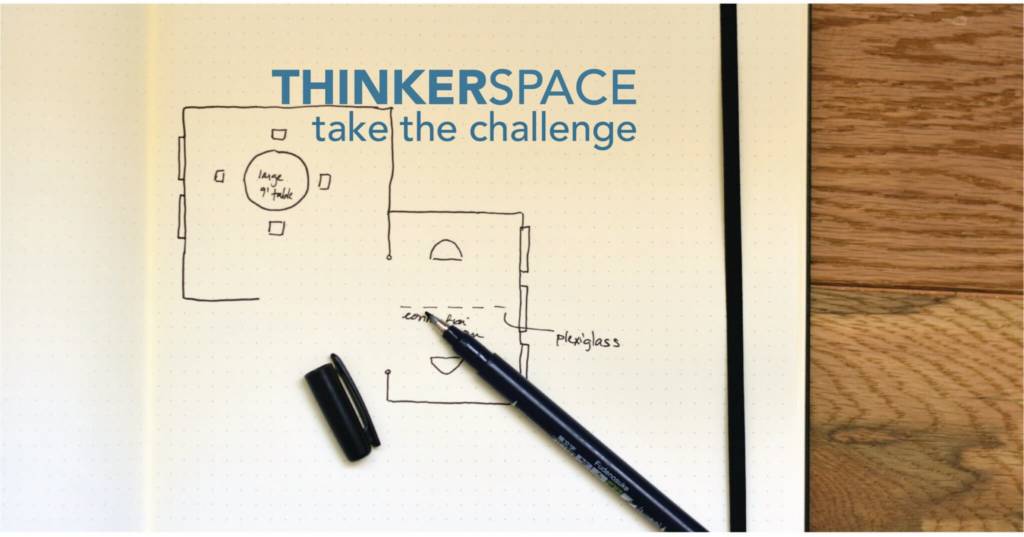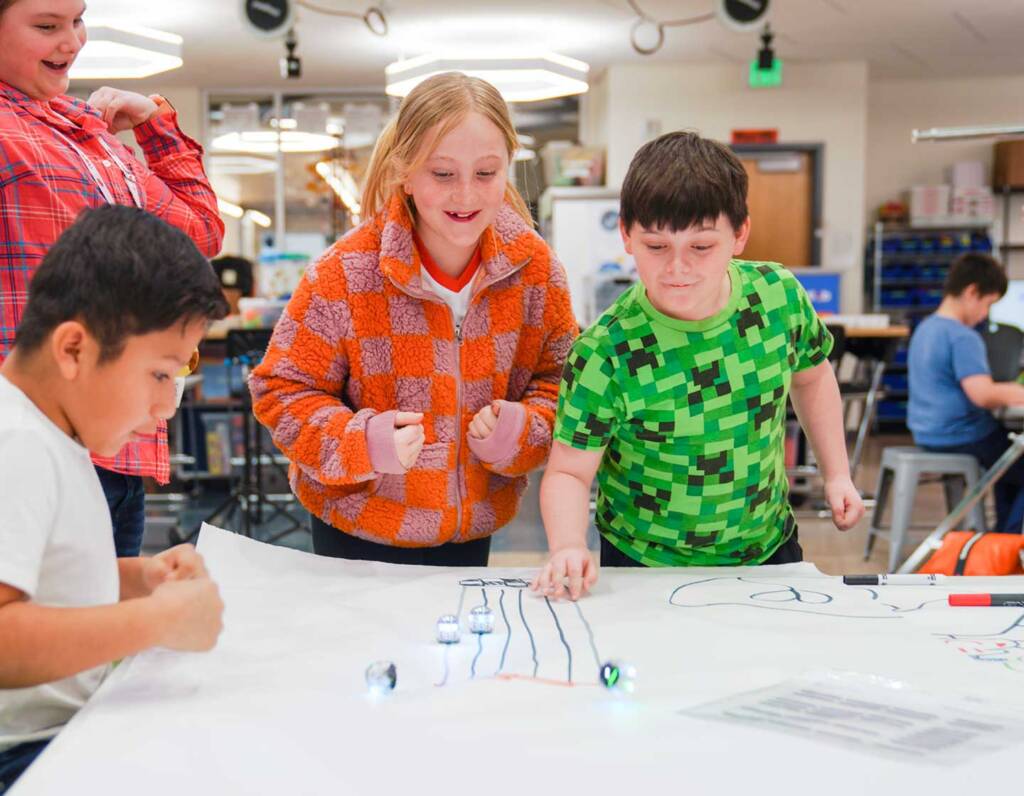ThinkerSpace Challenge: From Food Desert to Food Oasis
If you’ve been following our Facebook page, you’re familiar with our ThinkerSpace Challenges. These challenges are designed to engage students and your own children in project-based learning. As I write these challenges, I want to make sure kids can complete the challenge by using materials they can find around the house.
From here on, I’ll not only present a ThinkerSpace Challenge but I’ll also dive deeper by discussing how you can take a simple challenge and transform it into a meaningful learning experience for the learner.
Making Learning Worth It
If you ask children whether they’d rather read a book about what living things need to survive or start a garden and measure the growth of their plants, the majority of students will choose starting a garden. After all, learners are more likely to engage in projects that are meaningful to themselves, their friends and family, and their community.
In this week’s challenge, we bring meaning to learning by asking students to solve a real-world problem.
From Food Desert to Food Oasis
All over the nation, food deserts make it difficult for people to access high-quality, fresh foods. If your children or students have ever visited or lived in a large city, they know that there isn’t a whole lot of “green.” With open space limited, city residents have limited options when it comes to growing their own produce.

Design a Produce Garden with Materials You Can Find in Your House

A food desert is an area in which residents have limited access to healthy food. For some, this is because grocery stores that carry fresh food are too far away from their home and they don’t have a way to get to the store. For others, fresh food is more expensive than less healthy food options.

As you start designing a produce garden, consider these questions:
- If you live in an apartment or house in a big city, what materials do you have available? If you live in an apartment or house in a smaller town, what materials do you have available?
- What do plants need to thrive, or grow really well?
- What fruits and vegetables are high in nutrients like vitamins, protein, and fiber?
- All plants have different needs. What fruits and vegetables would grow best in a food desert?
- How big will your garden be? How much fresh food could it produce?
- What materials will you use to plant your garden? Consider the durability of your choices.
- If you don’t have a lawn or backyard to plant a garden, where will you place your garden? How can you ensure that your plants get access to what they need to survive?
- If you have a lawn or backyard, where is the best place to plant your garden? How can you make sure your plants get access to everything they need to survive?

Let’s get started with your challenge!
- Sketch a picture of your garden design.
- Include the measurements (length, width, and height) of your plan.
- Gather materials.
- Build the garden and plant your plants.
- Track and collect data about the growth of your plants.
- What do the plants need to survive? What can you adjust to make your plants grow faster or be stronger?
- If you change one of the “ingredients” plants need to survive, continue to track (or collect data) to see if your adjustment was effective.
- Make any needed adjustments to your design.
- If your design is functional, how can you make it better? Or easier to use? Or require less attention?

Start by asking your youngest learners to investigate plants in their neighborhood. What do they notice? What is around the plants? What does the dirt feel like? Does the plant get any sunlight? How much?
Ask your learners what they think plants need to survive. Now test it out!
Build a small growing space and plant a fruit, vegetable, or other plant to test their theory. The garden could be a plastic cup in the window sill, a mixing bowl from your kitchen, or the potty training toilet your preschooler has outgrown.
As the plant begins to grow, make observations. What do the leaves look like? What color are they? How do they compare to plants outside? Make changes to the plant’s location, watering schedule, and soil to improve the health and growth of the plant.
Using what they learned, help your learner build a more durable garden that they can give to a neighbor, family member, friend, or keep for themselves. Have your learner explain the best way to take care of the plant. Transcribe the directions on a card or piece of paper and include it with the garden.
Supporting ThinkerSpace Challenges
If you’re a parent—now educator—who’s supporting your child at home, it can be difficult to know where to start and how to structure the entire learning experience to encourage deeper learning.
If you’re a teacher, I know how overwhelming it is to take an idea like this ThinkerSpace Challenge, package it in a developmentally-appropriate format, and guide your students through the process.
For all of you, use the following tips to ease the workload and make this experience even more meaningful for you and your learner(s):
Embed structure in the learning experience. At Creative Learning Systems, we believe that learners construct meaning by taking an active role in the learning process. Yes, students can learn by following directions, but they can learn so much more when they take charge of the process. We do this with our SmartLab Learning Project Cycle and Project Journal. Learn how to use these two resources by reading my previous blog post.
Tie the engagement to a local need, population, or group tackling this real-world issue. Ron Finley, who calls himself the Gangsta Gardener, is helping his local community in South Central, Los Angeles gain access to healthy food sources. This video shares his story and his message to dream, care for your community, and fight for what is important.
Allow learners to set their own goals. Each learner will have his or her own reason why this experience is meaningful. Ask your learners how they want to make their learning mean something. Who do they want to help? How many gardens do they want to make? How will they share their ideas with those who could benefit from it?
Beyond the Learning
While students learn about a plant’s needs, test hypotheses and change variables, collect data, measurement, engineering, and so much more, they transform a “lesson” into real learning. When learners are engaged in meaningful projects, they gain the tools to change the world.




